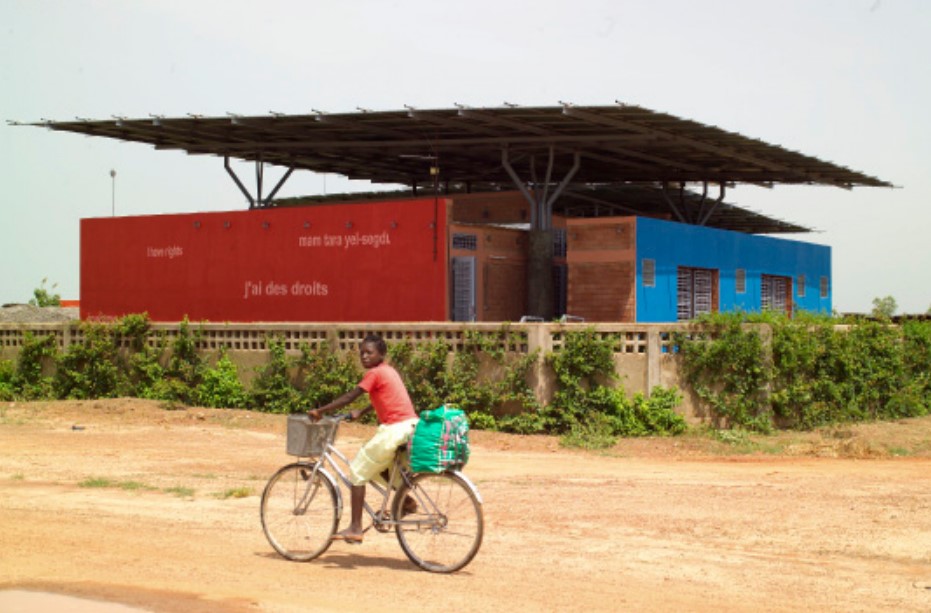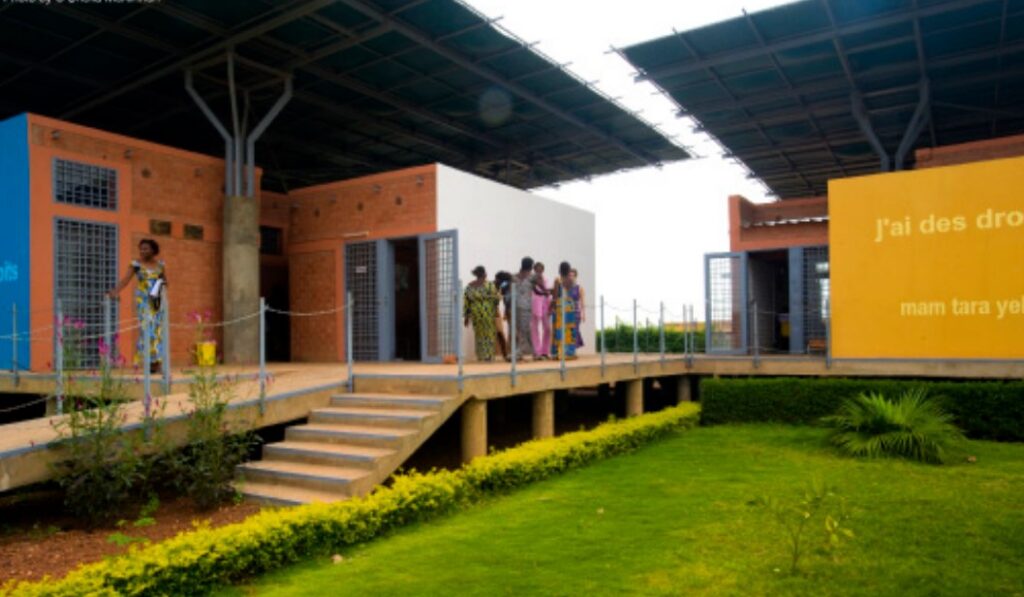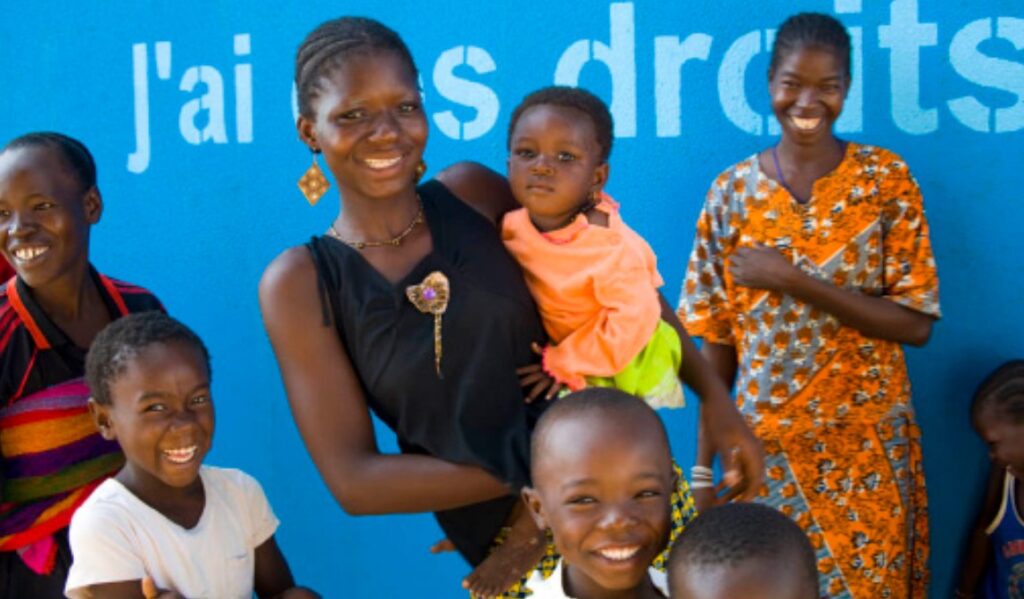| Location | Ouagadougou, Burkina Faso, Africa |
| Date | 2006-7 |
| End User | 3035 people general consulation; 1505 people health education |
| Client | Voix de Femmes, Burkinbé NGO |
| Implementing Partner | Associazione Italiana Donne per lo Sviluppo (AIDOS) |
| Design Firm | FAREStudio |
| Design Team | Giuseppina Forte, Joao Sobral, Erika Trabucco, and Emanuela Valle |
| Project Architect | Ricardo Vannucci, FAREStudio |
| Site Supervision | Joao Sobral, Erika Trabucco |
| Project Management | Elena Bonometti (AIDOS); Clara Caldera, Paola Cirillo, Sophie Sedgho (Voix de Femmes) |
| Contractor/Manufacturer | S.art Décor |
| Funders | Democratici di Sinistra Political Party; European Commission |
| Cost | €210 000/$300 531 USD |
| Building Area | 500 sq m/5381 sq ft |
| Site Area | 1600 sq m/17 222 sq ft |
| Occupancy | 60 people |



top left image: A girl rides her bike past the center constructed of sundried, locally made bricks. Photo: Cariddi Nardulli/FAREStudio
top right image: In 2010, 1065 boys and 41 men attended classes on sexual and reproductive health at the center. Photo: Sheila McKinnon/FAREStudio
bottom image: Women and children standing outside the center. The clients range in average age from 25 to 35 years old. Photo: Sheila McKinnon/FAREStudio
“I Have Rights” is written in five different languages across the vibrant brick red exterior of Centre pour le Bien-être des Femmes et la prévention des mutilations génitales féminines ‘Gisèle Kambou’ (CBF). The off-the-grid women’s health center near Ouagadougou, Burkina Faso, was designed by FAREStudio in partnership with Associazione Italiana Donne per lo Svilluppo (AIDOS), an Italian non-governmental organization committed to supporting women’s rights and advocating for women around the world.
The building is the first formal structure in Section 27, a squatter camp outside the capital. “The center has helped to beautify the area,” says Alice Bagagnan Ilboudo, 35, a user of the clinic. “The color and how it is constructed means that you know immediately that the building is the center.” It stands out for that reason, and because the designers chose attention-grabbing super-graphics to convey the statement. “We could have painted figures or ideograms, but painting something written in all the different languages spoken there meant to show to local people the building’s aim to be universal and made for the whole community,” says Erika Trabucco, site supervisor from FAREStudio.
“I have rights” is both the local non-governmental organization’s slogan and a strong statement. The building shouts it out loud giving a voice to those who have traditionally not had access to or knowledge of their legal and human rights. The center provides medical, legal, educational and psychological services for more than 4500 clients annually. It functions as a community center where meetings, health classes and weddings are held for men and women.
The climate, funding and political constraints in Burkina Faso caused lead architect Riccardo Vannucci to design a self-sufficient structure. “Politicians and government might pledge to support the building but I could not trust them and thus designed the building to be off-the-grid and function without government support,” he says. Energy is generated by the rooftop photovoltaic panels (PV), and with the exception of the medical rooms that need a generator to filter the air, it requires no additional electricity. The building is lifted above the ground to avoid dust, large barrels collect rainwater for the garden, and the roof is detached from the walls for passive cooling.
Alima Konate, the center’s director, says that the PV panels produce enough energy for the center, but dust and heat are issues in summer. It is taboo for women to seek help in this area and the center offers a necessary level of privacy, according to AIDOS Project Manager Paola Cirillo. “For gynecological diseases we were ashamed to go and get help. Now we go to the center for awareness sessions,” Ilboudo, a client, says.
One of the most common legal issues women request assistance with is marriage protection. The center organizes legally recognized weddings to help ensure women will be provided for if a marriage fails. “This is not just something nice but something important from the legal point-of- view,” Cirillo says. “Women usually only have a traditional wedding. This means that if the relationship ends they are left with nothing; no child support or alimony.” Spurred by success of the center, the government has started to contribute funding for additional infrastructure to the area. A maternity center was completed in December 2010.
















READ OR LEAVE A COMMENT